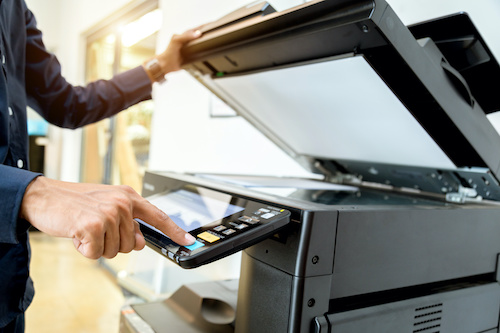Key points:
In recent years, school system leadership has been confronted with many complex decisions, ranging from security concerns and public health crises to budgetary constraints and the diverse needs of students, faculty, and staff. Among these challenges, integrating technology, particularly printing solutions, should be a line on the budget for advancing institutional achievement.
Print technology plays a unique role in modern education–and the right strategies can optimize printing resources to support the overarching goals of educational excellence.
Consider this: There are thousands (sometimes millions) of printing devices within the schools in a given state. At first glance, technology may seem ubiquitous and readily available. However, within this vast array of devices lies a hidden complexity: multiple models of the same device coexist. This diversity inevitably leads to challenges for IT departments and budgetary concerns for school systems as the procurement of various consumables and software becomes necessary.
This example of a trickle-down effect underscores the influence tools like printers can have on a budget, especially within education systems. The good news is that by standardizing your equipment, you can promote efficiency and effectiveness, ultimately contributing to the enhancement of student education.
Investing upfront for long-term success
Academic leaders face many decisions when laying the groundwork for school success. Among the most important is recognizing a school or district’s technological requirements and implementing a strategic plan to ensure that schools, particularly their IT departments, invest upfront with long-term success objectives in mind.
In the age of digitization, printing remains a pivotal element of modern education and a prerequisite for school achievement. Whether it involves providing supplementary resources for students with high needs, utilizing visual learning aids to display complex concepts, or disseminating classroom newsletters, the investment in printers for school systems nationwide is indispensable.
Printer standardization benefits all
By prioritizing upfront investments in printing technology, educational institutions can lay the foundation for continued success in the long term. Though pricey initially, standardizing your printer fleets is more time-efficient and cost-effective in the long run. The benefits include, but are not limited to, simple user setup, increased security capabilities, streamlined IT and maintenance processes, and document management/monitoring–all necessary for school systems to operate effectively.
Let’s take a look at each, one by one.
Simple user setup standardizes all printers, ensuring consistency in authentication methods, access controls, and permission settings. This streamlined approach makes managing user profiles easier, enhances security measures, and promotes accountability across the board.
Increased security capabilities give school leadership peace of mind that sensitive data (particularly regarding students) is safe from hackers and breaches. It is more easily attainable if all devices have the same security features and safeguards.
Streamlined IT and maintenance processes help keep printers working correctly and minimize the risk of device downtime, which could cause several issues for schools as they’re trying to provide resources for students and families.
Document management and monitoring ensure alignment between scanning, file sharing and storage, and archiving activities. This alignment guarantees that documents are readily accessible and well-organized for easy retrieval across multiple institutions.
Budget-friendliness is the name of the game when it comes to printing. Dealing with multiple vendors, various models, different types of inks and toners, and accessories can quickly strain a budget. Consolidating these elements is critical to driving cost efficiencies and maintaining financial responsibilities.
It’s common for tasks like printing to be overlooked and fall to the bottom of the priority list. Let’s face it: With the increasing digitalization of education, some may question the necessity of printing altogether. However, it’s important to recognize that often, it’s the “small stuff” or everyday processes that can significantly impact a school’s budget, especially considering the scrutiny that expenditure receives across administrations. That is why having manageable and standardized printing systems is essential, as the absence of such can lead to heightened expenses, security vulnerabilities, and a host of other challenges for school leaders, particularly IT teams.
Investing in a standardized printer fleet upfront mitigates risks and promises long-term benefits that ultimately enrich student learning experiences and boost educator productivity.


